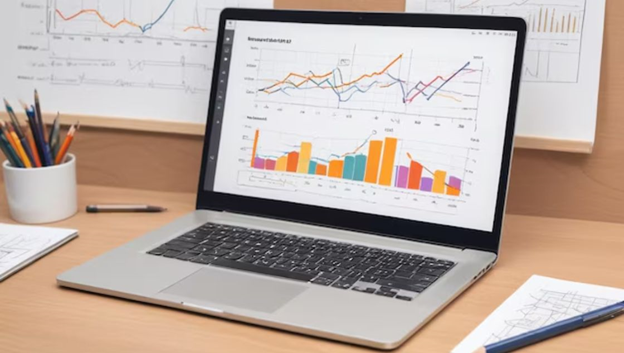If you’ve ever looked at data and thought, “There’s more to this than two numbers,” then a bubble chart might be exactly what you need. It’s like taking a standard scatter plot and adding one more layer of information. But don’t worry—it’s simpler than it sounds! Let’s dive into what a bubble chart is, how it works, and when it’s useful.
What is a Bubble Chart?
Imagine you’re shopping for fruits at the market. You have three things you care about: the type of fruit, its price, and how big each fruit is. A regular chart might show the type of fruit on one axis and the price on the other. But a bubble chart goes a step further by adding the size of each fruit as the third element—now, the larger the bubble, the bigger the fruit!
In data terms, a bubble chart shows three things at once:
- X-axis: One variable, like time.
- Y-axis: Another variable, like revenue.
- Bubble size: A third variable, such as the number of items sold.
Real-Life Examples of Bubble Chart
| Scenario | X-axis | Y-axis | Bubble Size | Insight |
| Business Profits | Customer visits | Revenue per customer | Profit per store | Large bubbles in the top-right show profitable, high-traffic stores; smaller bubbles may signal low-performing locations. |
| Sports Performance | Goals scored | Assists made | Minutes played | Large bubbles in the top-right highlight key players with high scores, assists, and playtime; smaller bubbles may show those needing improvement. |
Why Use a Bubble Chart?
The main advantage of a bubble chart is that it gives you three dimensions of data in one chart. This way, you can spot trends, relationships, and important outliers all at once. Think of it as a map for your data that lets you see which points stand out based on size, value, and position.
When to Use a Bubble Chart Instead of a Scatter Plot
A scatter plot is perfect for showing two variables, like test scores and study hours. But if you also want to add, say, the number of study sessions, then a bubble chart is more helpful. It allows you to see a fuller picture without adding multiple charts.
Conclusion
Bubble charts are a powerful way to understand complex data, presenting three variables in a single, easy-to-read format. By plotting data on two axes and adding a bubble size to show significance, they provide a fuller picture at a glance. Whether you’re analyzing business performance, evaluating sports stats, or managing personal finances, bubble charts help identify patterns, highlight key insights, and guide better decision-making. Simple yet effective, they transform data into clear, visual stories that make complex information instantly accessible.

